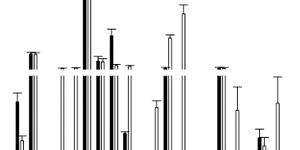- Joined
- Oct 8, 2012
- Messages
- 28,327
- Reputation
- 10,198
- Reaction score
- 85,426
- Points
- 0
- Website
- www.autoflower.org
The taxonomy of cannabis has been improperly classified for a long time apparently.
"Since the 1970s, cannabis has been divided into three sub-species (often confused as different species), C. indica, C. sativa, C. ruderalis, with ruderalis largely being considered ‘wild cannabis,’ not fit for medicinal or recreational uses. A common lay-persons distinction is between marijuana, which is bred for high cannabinoid content, and hemp, which is bred for industrial uses like fiber.
Any of the three subspecies can be bred as a hemp or marijuana plant. John McPartland, a researcher affiliated with GW Pharmaceuticals, presented a study at the 2014 meeting of the International Cannabis Research Society, proposing a new nomenclature for cannabis. The original report on O’Shaughnessy’s contains more information than I can reproduce here, and has a wonderful chart; it is definitely worth your time to read.
It seems Richard Evans Schultes, the man who created the original taxonomy for cannabis in the 1970s, misidentified a C. afghanica plant as a C. indica plant. That one mistake began 40 years of confusion which has only been dispelled by McPartland’s research this year.
McPartland was the first researcher to look at the genetic markers on the three subspecies of cannabis using the plant’s genome to conclusively identify where it originated. He also proved conclusively that they are all the same species, just different subspecies. As it turns out, C. sativa should have been identified as C. indica, because it originated in India (hence indica). C. indica should have been identified as C. afghanica, because it actually originated in Afghanistan. Finally, it seems that C. ruderalis is actually what people mean when they refer to C. sativa."
In Colorado, medical dispensaries are starting to focus on terpenes and cannabinoids versus "just THC." Cresco Labs (and there was a study done by a university in Spain as well, I have the link somewhere in my bookmarks) state the difference between sativa and indica is literally the presence/lack-of and concentration of the terpene Myrcene.
"Myrcene, the most common terpene in cannabis, is known to help patients sleep, battling conditions like anxiety and insomnia. If present in a specific strain in a volume greater than 0.5 percent, the strain is considered an indica. If the amount of myrcene is under one half of one percent, then the strain is deemed a sativa."
High myrcene? Couch lock.
Low myrcene? Less couch lock, more room for all the other crazy shit cannabinoids and other terpenes play part in.
Further, I've seen multiple lab techs in Colorado state that CONSUMING negates the notion of sativa/indica completely (basically consumption creates a universal-high feeling) because of the way it metabolizes in your liver. If that's true, there is no difference between a sativa edible versus an indica edible (other than marketing to sell the product.)
What do you think, AFN?
"Since the 1970s, cannabis has been divided into three sub-species (often confused as different species), C. indica, C. sativa, C. ruderalis, with ruderalis largely being considered ‘wild cannabis,’ not fit for medicinal or recreational uses. A common lay-persons distinction is between marijuana, which is bred for high cannabinoid content, and hemp, which is bred for industrial uses like fiber.
Any of the three subspecies can be bred as a hemp or marijuana plant. John McPartland, a researcher affiliated with GW Pharmaceuticals, presented a study at the 2014 meeting of the International Cannabis Research Society, proposing a new nomenclature for cannabis. The original report on O’Shaughnessy’s contains more information than I can reproduce here, and has a wonderful chart; it is definitely worth your time to read.
It seems Richard Evans Schultes, the man who created the original taxonomy for cannabis in the 1970s, misidentified a C. afghanica plant as a C. indica plant. That one mistake began 40 years of confusion which has only been dispelled by McPartland’s research this year.
McPartland was the first researcher to look at the genetic markers on the three subspecies of cannabis using the plant’s genome to conclusively identify where it originated. He also proved conclusively that they are all the same species, just different subspecies. As it turns out, C. sativa should have been identified as C. indica, because it originated in India (hence indica). C. indica should have been identified as C. afghanica, because it actually originated in Afghanistan. Finally, it seems that C. ruderalis is actually what people mean when they refer to C. sativa."
In Colorado, medical dispensaries are starting to focus on terpenes and cannabinoids versus "just THC." Cresco Labs (and there was a study done by a university in Spain as well, I have the link somewhere in my bookmarks) state the difference between sativa and indica is literally the presence/lack-of and concentration of the terpene Myrcene.
"Myrcene, the most common terpene in cannabis, is known to help patients sleep, battling conditions like anxiety and insomnia. If present in a specific strain in a volume greater than 0.5 percent, the strain is considered an indica. If the amount of myrcene is under one half of one percent, then the strain is deemed a sativa."
High myrcene? Couch lock.
Low myrcene? Less couch lock, more room for all the other crazy shit cannabinoids and other terpenes play part in.
Further, I've seen multiple lab techs in Colorado state that CONSUMING negates the notion of sativa/indica completely (basically consumption creates a universal-high feeling) because of the way it metabolizes in your liver. If that's true, there is no difference between a sativa edible versus an indica edible (other than marketing to sell the product.)
What do you think, AFN?

